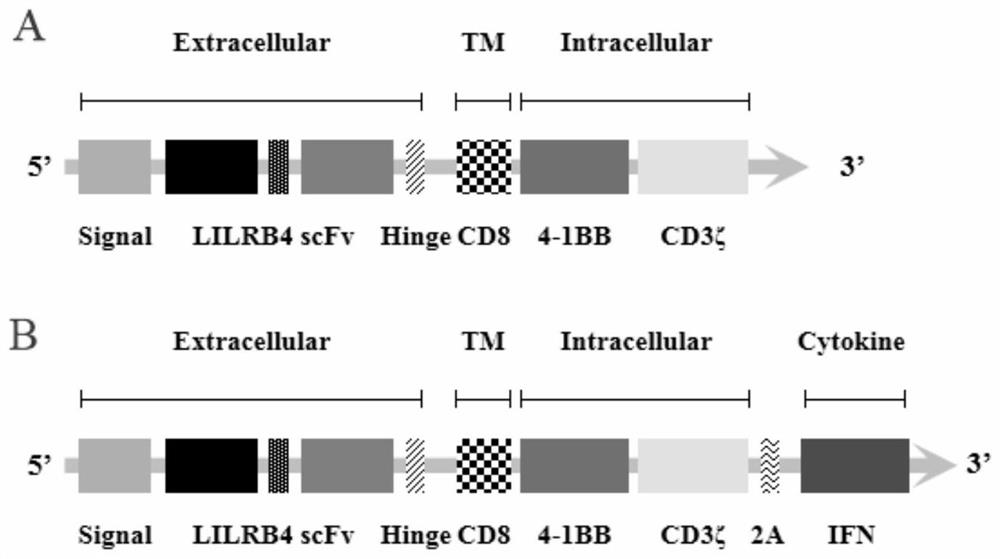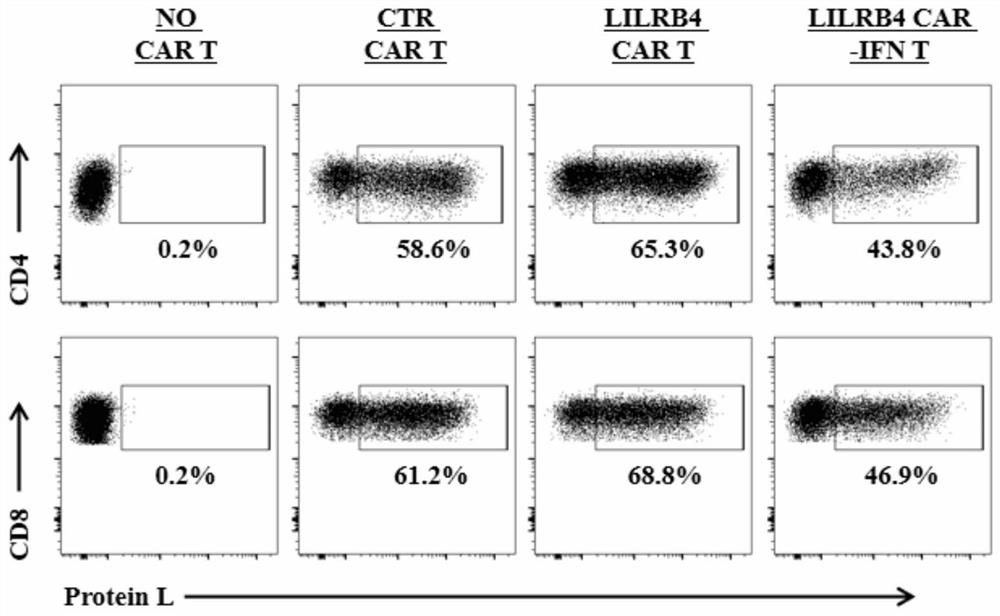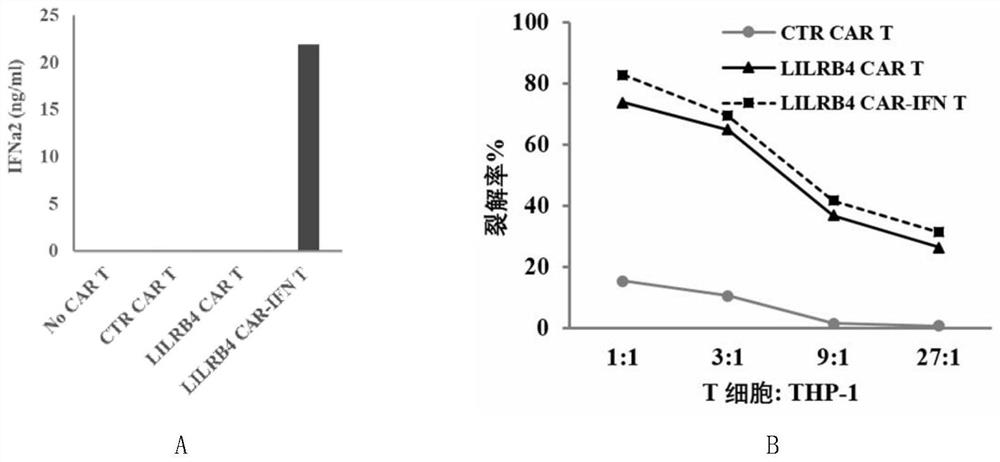A chimeric antigen receptor and its application in the preparation of products for treating tumors
A chimeric antigen receptor and product technology, applied in the field of biomedicine, can solve problems such as reducing the safety, toxic and side effects of CAR-T therapy, and increasing CAR-T cells, so as to reduce the risk of hematopoietic system inhibition and promote tumors. Effects on growth, resolution of recurrence and metastasis
- Summary
- Abstract
- Description
- Claims
- Application Information
AI Technical Summary
Problems solved by technology
Method used
Image
Examples
Embodiment 1
[0140] Example 1. Preparation of CAR-T cells
[0141] 1. Construction of retroviral vector
[0142] 1. Optimization of the full-length cDNA sequence of wild-type human IFNα2b gene
[0143] The full-length sequence of wild-type human IFNα2b gene cDNA is called nIFNα2b. In order to make nIFNα2b more suitable for expression in human cells, under the condition that the amino acid sequence encoded by nIFNα2b remains unchanged, the codon optimization of nIFNα2b sequence was carried out on the website http: / / sg.idtdna.com / site to obtain oIFNα2b, The nucleotide sequence of oIFNα2b is shown at positions 1570-2133 of SEQ ID NO.1.
[0144] 2. Design and synthesis of LILRB4-CAR-IFN gene sequence
[0145] The LILRB4-CAR-IFN gene sequence sequentially includes the coding gene sequence of human CD8 leader peptide, the coding gene sequence of LILRB4 scFv, the coding gene sequence of human CD8 hinge transmembrane region, the coding gene sequence of human 4-1BB intracellular region, the codi...
Embodiment 2
[0178] Example 2, CFSE labeling method to detect the specific killing effect of CAR-T cells on tumor cells
[0179] CFSE (CFDA-SE) is a cell staining reagent that can fluorescently label living cells. It can easily penetrate the cell membrane, covalently bind to intracellular proteins in living cells, and release green fluorescence after hydrolysis. The principle of CFSE labeling living cells can be used to label and quantify tumor cells, so as to detect the killing efficiency of CAR-T cells on tumor target cells. The specific method is: the target cells are equally divided into two groups and adjusted to the same cell density. Stained with low concentration and high concentration of CFSE respectively, wherein high concentration stained target cells and non-stained immune cells were co-cultured according to a certain ratio. After a period of incubation, the high-concentration stained tube of target cells (along with immune cells) was mixed in equal volume with the low-concent...
Embodiment 3
[0194] Example 3. Tumor transplantation model to detect the tumor killing effect of CAR-T cells in animals
[0195] 1. Construction of K562 tumor cells overexpressing LILRB4 gene
[0196] K562 cells that do not express LILRB4 were used as the starting cells, and the LILRB4 gene was overexpressed in K562 cells to realize its function as LILRB4-positive target cells. The specific construction method is as follows: insert the synthetic LILRB4 sequence (see SEQ ID NO.8) into the AgeI and EcoRI restriction sites of the pRV-Luc-GFP vector, and obtain the pRV-Luc-GFP-LILRB4 recombinant expression vector after sequencing verification ( Figure 4 ). The pRV-Luc-GFP-LILRB4 recombinant expression vector verified by sequencing was transfected into K562 cells to obtain K562 cells overexpressing the LILRB4 gene (referred to as K562-LILRB4). LILRB4 antibody flow cytometry was used to detect whether LILRB4 was correctly expressed on the surface of K562 cells.
[0197] 2. Tumor transplanta...
PUM
 Login to View More
Login to View More Abstract
Description
Claims
Application Information
 Login to View More
Login to View More - R&D
- Intellectual Property
- Life Sciences
- Materials
- Tech Scout
- Unparalleled Data Quality
- Higher Quality Content
- 60% Fewer Hallucinations
Browse by: Latest US Patents, China's latest patents, Technical Efficacy Thesaurus, Application Domain, Technology Topic, Popular Technical Reports.
© 2025 PatSnap. All rights reserved.Legal|Privacy policy|Modern Slavery Act Transparency Statement|Sitemap|About US| Contact US: help@patsnap.com



